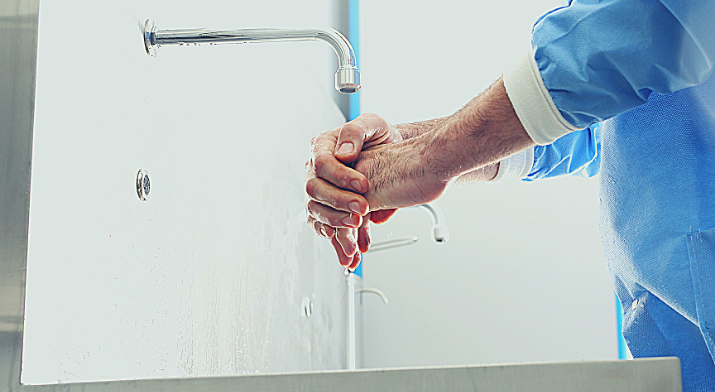World Hand Hygiene Day
By: Crouse News
May 5, 2021
Home » Crouse Connects » World Hand Hygiene Day
 Each year on May 5, the World Health Organization (WHO) celebrates World Hand Hygiene Day, aiming to maintain global promotion, visibility and sustainability of hand hygiene in healthcare.
Each year on May 5, the World Health Organization (WHO) celebrates World Hand Hygiene Day, aiming to maintain global promotion, visibility and sustainability of hand hygiene in healthcare.
In 2021, WHO asks healthcare providers and staff to achieve hand hygiene at the point of care.
Hand Hygiene in Healthcare
“Cleaning your hands is one of the most simple and effective ways to prevent the spread of germs, helping to keep our patients and ourselves safe,” says Crouse Infection Control Practitioner Sara McNeil, RN.
“Perform hand hygiene by washing your hands with soap and water for at least 20 seconds or use an alcohol-based hand sanitizer covering all surfaces of your hands,” she advises.
In order for hand hygiene to be effective and prevent the spread of germs, five specific moments when proper hand hygiene should be performed are identified as being:
- Before a patient encounter: At Crouse, we have gel antibacterial hand sanitizer stations at each patient door. By cleaning hands before entering a patient’s room, we prevent the spread of germs that may be on a caregiver’s hands.
- Before a ‘clean’ procedure: Providers should clean their hands immediately before these procedures to prevent any harmful germs from entering a patient’s body.
- After a fluid exposure: Providers should wash their hands immediately after removing gloves when there is any exposure to a patient’s bodily fluids
- After touching a patient: Immediately after examining a patient, providers should perform proper hand hygiene to prevent the transmission of any germs.
- After touching a patient’s surroundings: Providers should wash their hands after exiting a patient’s room with soap and water or appropriate hand sanitizer. This will protect the provider, care team and the whole hospital.
Now, more than ever, proper hand hygiene is essential, as the practice prevents up to 50% of avoidable infections acquired during healthcare delivery.
“Infection prevention takes the whole team. Infection control thanks all care providers for all they do,” McNeil says.
Proper hand hygiene can also prevent the spread of the virus that causes COVID-19, affecting both patients and care teams.
Hand Hygiene in Everyday Life
Washing your hands is easy, and it’s one of the most effective ways to prevent the spread of germs. Clean hands can stop germs from spreading from one person to another and throughout an entire community.
The Centers for Disease, Prevention and Control (CDC) recommend following these five steps every time:
- Wet your hands with clean, running water (warm or cold), turn off the tap, and apply soap.
- Lather your hands by rubbing them together with the soap. Lather the backs of your hands, between your fingers, and under your nails.
- Scrub your hands for at least 20 seconds. Need a timer? Hum the “Happy Birthday” song from beginning to end twice.
- Rinse your hands well under clean, running water.
- Dry your hands using a clean towel or air dry them.
Read more about hand hygiene at
https://www.cdc.gov/handwashing/when-how-handwashing.html
Crouse News is reported by members of our Communications Team.
Categories: Crouse News
Tags: coronavirus, covid-19, Crouse Health, infection control, wellness
Share this
